The Most German Town in America: New Ulm, Minnesota
A Visit to New Ulm, Minnesota: Learning its history and experiencing the Most German Town in America
Last updated July 2021
(Disclosure: I was a guest of Explore Minnesota and Visit New Ulm as part of a pre-conference tour at the TBEX bloggers’ conference. Observations and opinions are my own.)
When you first drive into New Ulm, Minnesota, it looks much like any other Minnesotan town. But when you drive past the Gockenspiel clock and see German names on many of the businesses, you may wonder if you’ve somehow left the United States completely. The city of New Ulm calls itself “the most German town in America.” New Ulm was founded by two groups of German immigrants in the mid-1850s, both looking to create a “Utopian German community.” Today, 66% of its residents claim German ancestry.
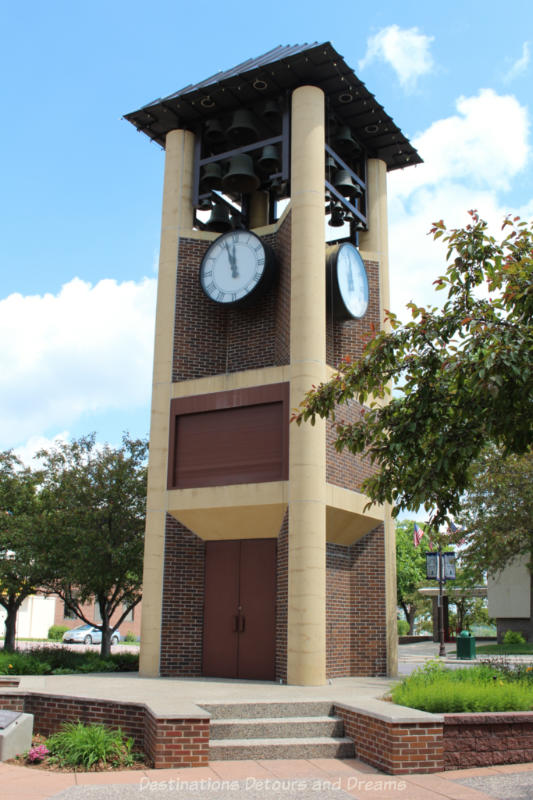
A 45-foot tall Glockenspiel clock tower occupies a corner park in downtown New Ulm. It chimes the time of day in Westminster style and plays programmed pieces at noon, 3 pm and 5 pm. It has 37 bells. Glockenspiel clocks originated in Europe and were frequently located in town squares. The New Ulm Glockenspiel was dedicated in 1980.
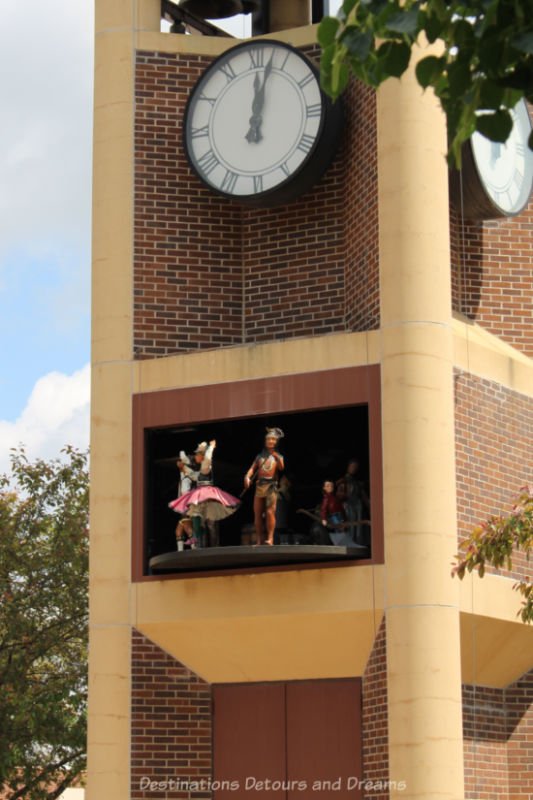
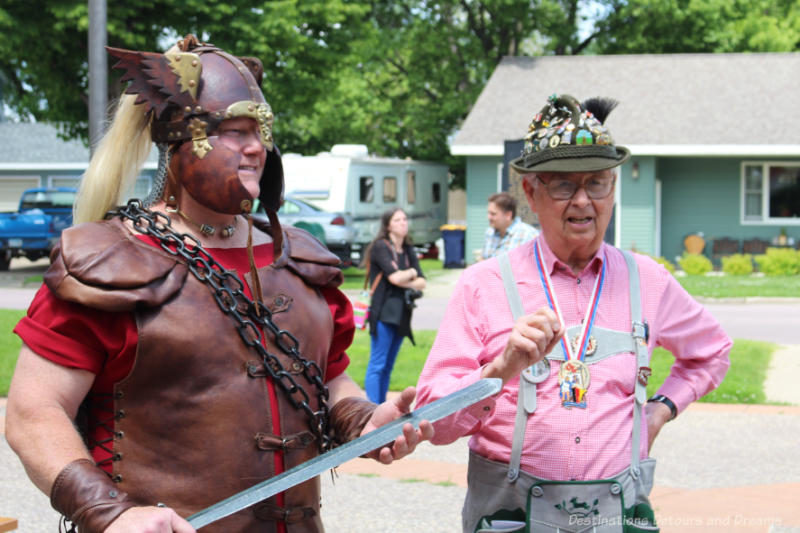 Local resident George L. Glotzbach (shown at the right in the above photo), clad in traditional lederhosen, met our tour group at the Glockenspiel. The New Ulm Convention and Visitors Bureau named George as 2016 New Ulm Tourism Person of the Year because of what he does to promote tourism through showcasing the town to visitors and sharing its stories. Over lunch, George told us about the history of the town, sprinkling in colourful stories from his own family history. George’s great-great grandfather settled in New Ulm in 1855. His great-great-grandfather later drowned while ferrying a barrel of whisky across the river. George has since passed away, in 2020 at the age of 89.
Local resident George L. Glotzbach (shown at the right in the above photo), clad in traditional lederhosen, met our tour group at the Glockenspiel. The New Ulm Convention and Visitors Bureau named George as 2016 New Ulm Tourism Person of the Year because of what he does to promote tourism through showcasing the town to visitors and sharing its stories. Over lunch, George told us about the history of the town, sprinkling in colourful stories from his own family history. George’s great-great grandfather settled in New Ulm in 1855. His great-great-grandfather later drowned while ferrying a barrel of whisky across the river. George has since passed away, in 2020 at the age of 89.
After the 1848 Revolution in Europe, many liberal-minded Germans came to the United States. Chicago and Cincinnati were two of the cities they settled in. The founders of New Ulm came from these two cities. After experiencing discrimination, they looked to the American frontier to create a safe and exclusive place for German immigrants.
A group called the “Chicago Land Society” selected the site of New Ulm in 1854. Many within the group came from Württemburg in Germany. They named the town after Ulm, the largest city in Württemburg. In 1856 a group of Turners from Cincinnati arrived in New Ulm. The Turners were a society of liberals and free-thinkers. Once in the U.S., they built gymnastic clubs (“sound mind sound body”) similar to what they had in Europe and sought to preserve their culture. They were anti-slavery and anti-prohibition, and advocated free public education and separation of church and state. When they arrived in New Ulm, the previous group of German settlers had lots of land, but had become strapped for cash. The Turners were land-poor but cash-rich. The groups merged and created New Ulm.
New Ulm was designed with several blocks reserved in the centre of town for a public school, a courthouse and the Turner Hall. Parts of the current New Ulm Turner Hall date to 1873. It is the oldest Turner Hall in the United States still operating as its original use. Its Rathskeller may be the oldest continuously used bar in Minnesota. The gymnastics program is the oldest in the state.
In the 1860s and 1870s, a number of families from the German province of Bohemia (now part of the Czech Republic) came to the area. They were primarily Catholic and this caused some turmoil with the Turners. The Bohemians settled in farmland outside of town. Over time, many moved into town and became integrated into New Ulm.
New Ulm faced a number of challenges in its early years. It was attacked twice during the 1862 Dakota War, the largest Indian war in American history. There were locust infestations in the 1870s. A damaging tornado ripped through town in 1881. But the pioneers endured.
There was a large pacifist movement in New Ulm during the era of World War I. In 1917, the Turners led a rally protesting U.S. involvement in the war. Shortly after that, the Governor removed the Mayor, City Attorney and Country Treasurer from office. German culture was subdued for a few years.
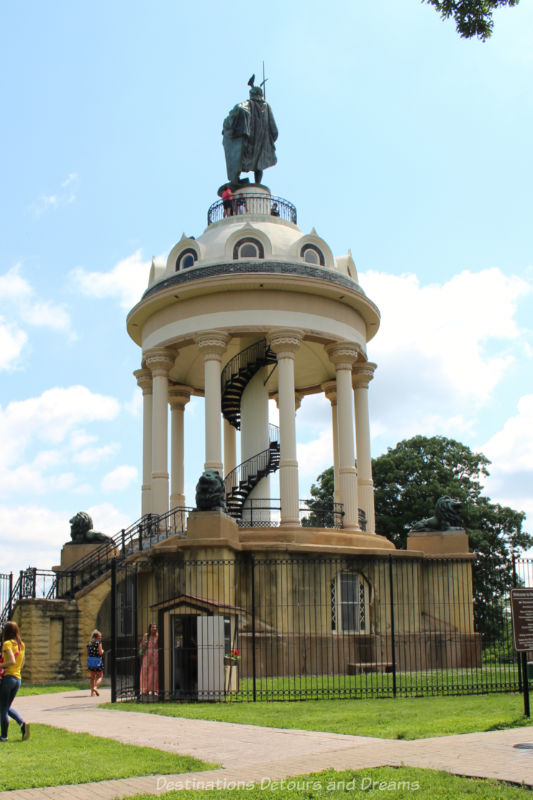
On the grounds of Hermann Heights Park, a 102-foot monument towers over New Ulm. It depicts Hermann, a Cheruscan chieftain whose army liberated Germany from Roman rule in 9 A.D. The legend of Hermann, the freedom fighter, lived on in German folklore over the following centuries. He came to stand for freedom, fidelity and honour. A huge monument was erected in Detmold, Germany in honor of Hermann in 1875. Ten years late, New Ulm architect Julius Berndt proposed building a monument in America. The New Ulm chapter of the Sons of Hermann provided the site. It took nearly a decade to built the statue and a few more years to secure funding for the monument structure. The Hermann Monument was dedicated in 1897.
Today, visitors can climb a staircase to the top of the monument for a panoramic view of New Ulm. (Disclosure: I did not climb all the way to the top.) Inside the base of the monument is an interpretive centre telling the story of Hermann and of the building of the New Ulm monument.
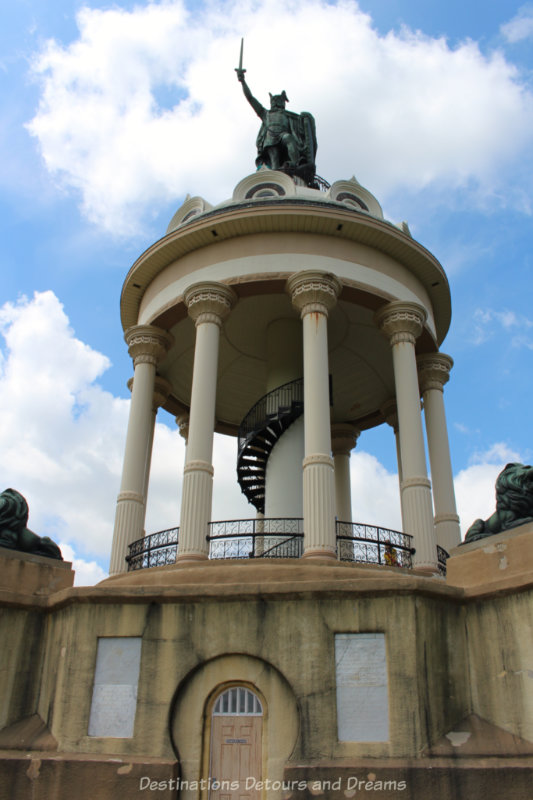
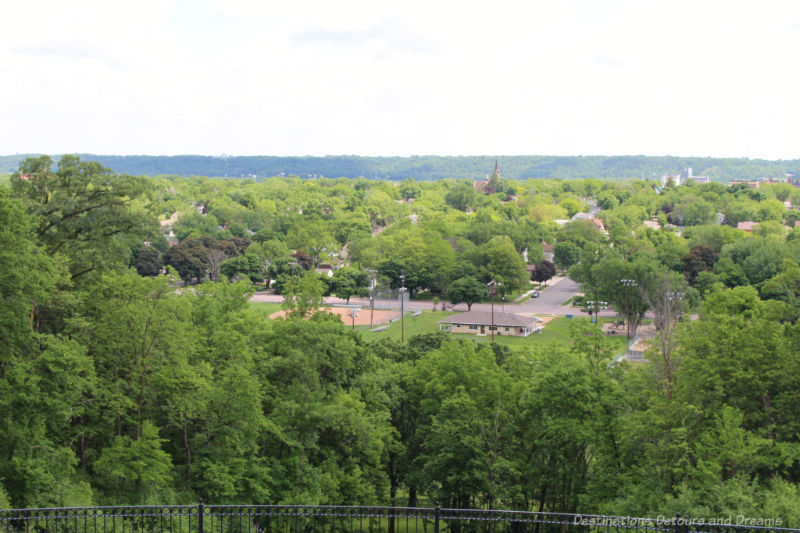
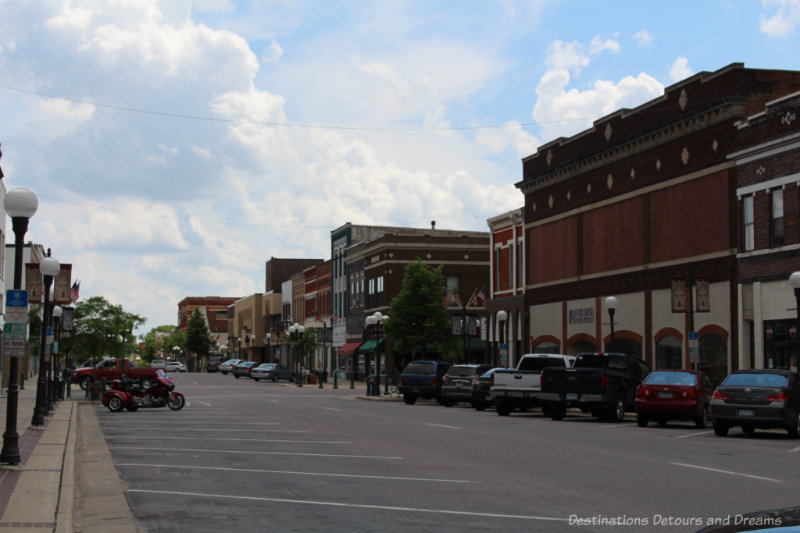
I did not have time this visit to browse through the shops in New Ulm. That remains something for a future visit. Shops carry local crafts and German imports. I was told to look for “gnome-made” fudge.
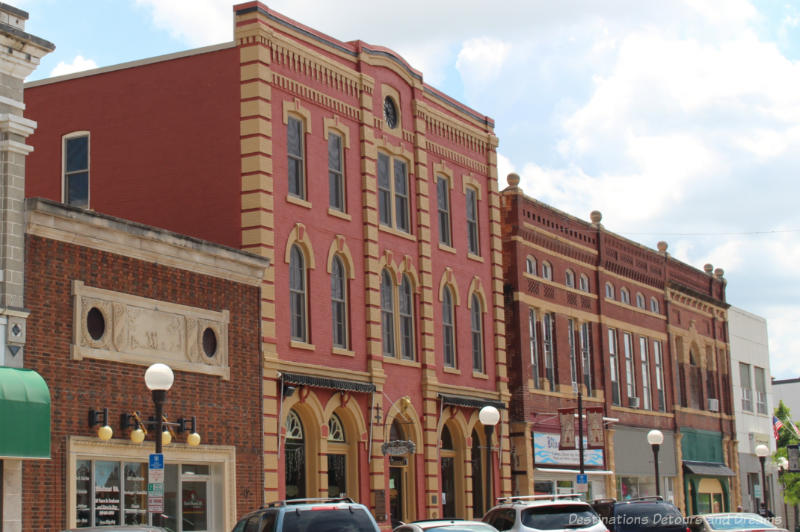
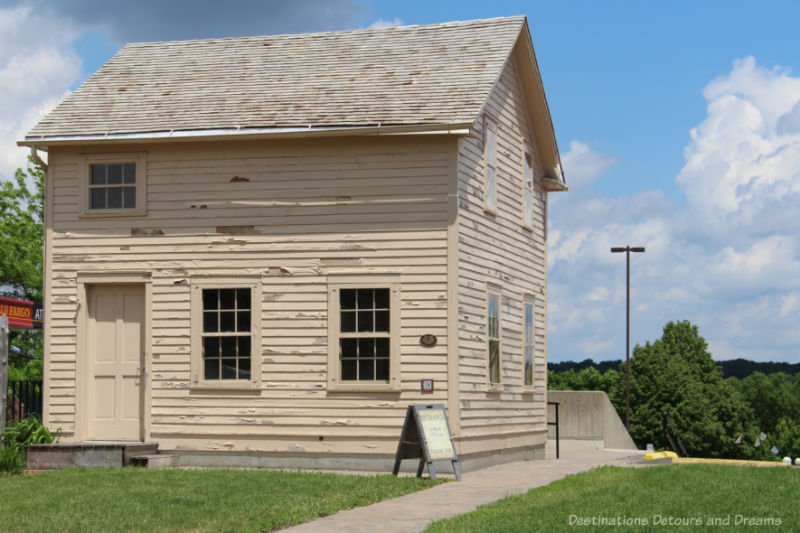
The 1862 Dakota War was a significant event in New Ulm’s history. The Kiesling House is one of only three downtown buildings to survive the war. It is the only surviving wood-framed house from that era in Brown County. It now houses a museum open from Memorial Day to Labor Day.
We stopped for lunch Veigel’s Kaiserhoff when I had a meal of sausage, potatoes, and sauerkraut. And Buddy’s Soda to drink.
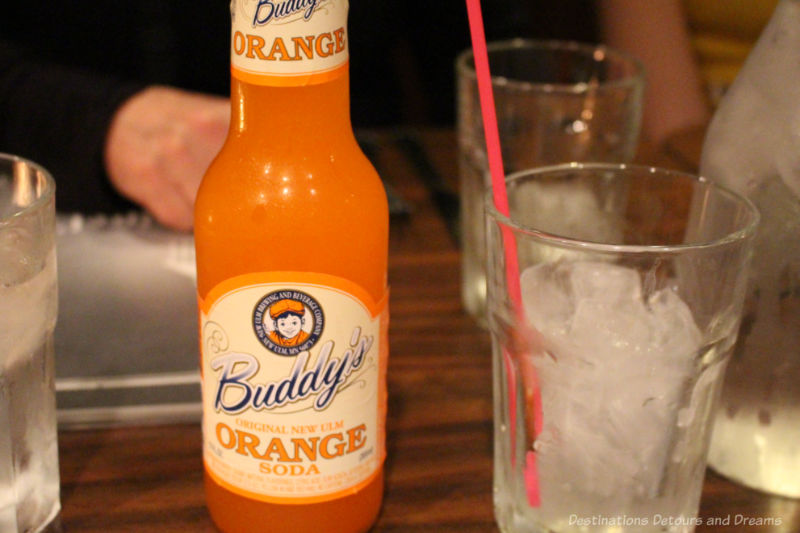
Buddy’s Soda is the result of the prohibition era, when breweries could not produce beer. They turned to soda to keep workers employed. Buddy’s Soda is still produced today.
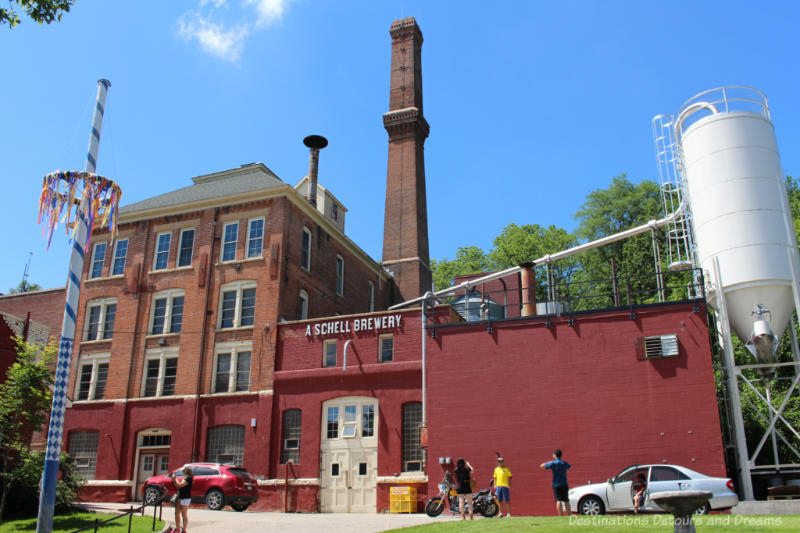
The Prohibition Era is long over. What would a German town be without beer? August Schell arrived in New Ulm in 1856 and realized the potential for a brewery. He rolled out his first barrel on a delivery wagon in 1860. Today Schell’s Brewery occupies beautiful grounds along the river and contains a brewing museum, tasting room, and outdoor gardens. We ended our tour to New Ulm with a tasting here.
For years after the founding of New Ulm, residents tried to preserve it exclusively for Germans. It was a closed town. George credited the radio with changing that. It brought the rest of the world to New Ulm in English. By the time of World War II, New Ulm had become Americanized. George said when he started school, many of the students knew only German. English was spoken at school, German at home. That was not the case in George’s home. His parents said they were Americans now and would speak English. However, George’s grandmother lived with them and she spoke German. She was at home when George came home from school. That was at the same time as she was getting ready for her afternoon beer. She’d give George a small amount in a glass. The amount increased as he grew older. And she spoke German with him. Today, German is not as prevalent. George and others work to teach it to young people.
The history of New Ulm provides food for thought about the preservation of culture in a new land, about the conflict between assimilation and remembering one’s heritage. Today, New Ulm feels both American and German. Non-Germans are welcome. And it is a charming, interesting and fun place to visit.
PIN IT
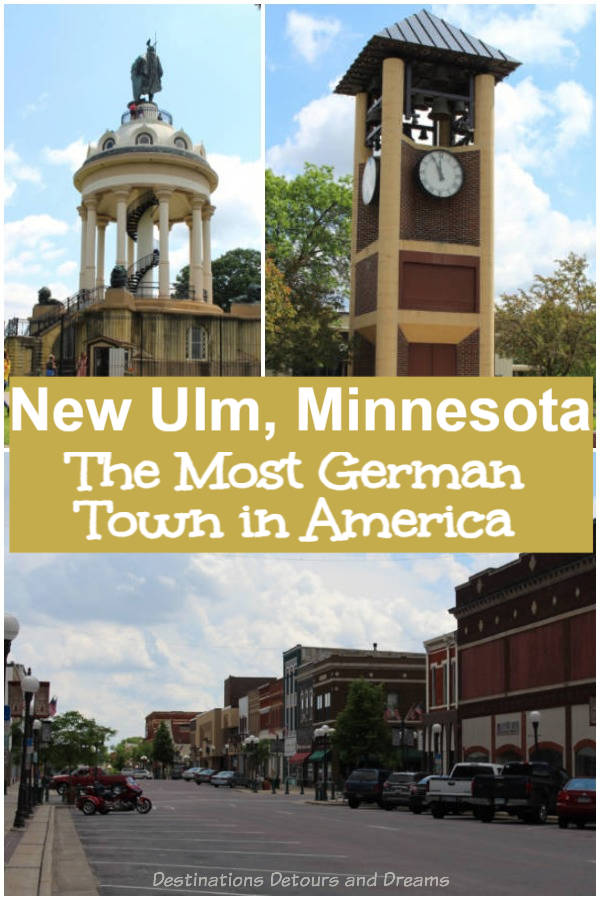
Destinations Detours and Dreams monthly e-newsletter contains behind the scenes information, sneak peeks ahead, travel story recaps and more. SIGN UP HERE

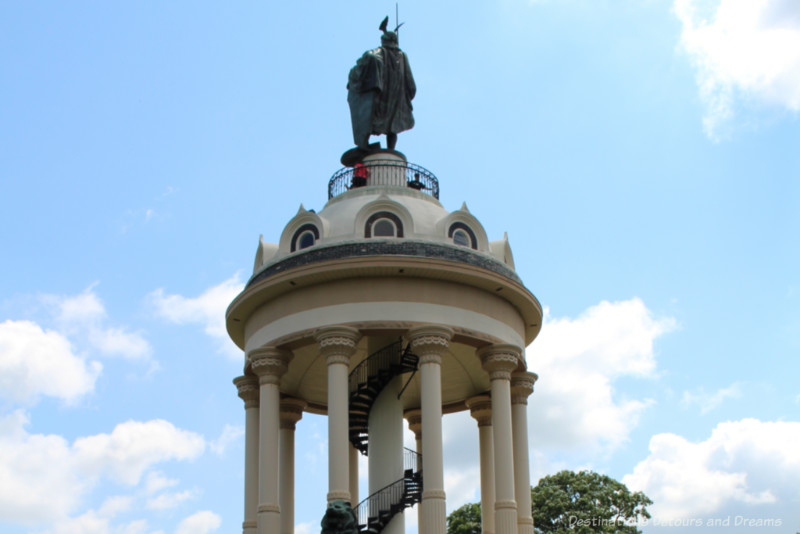
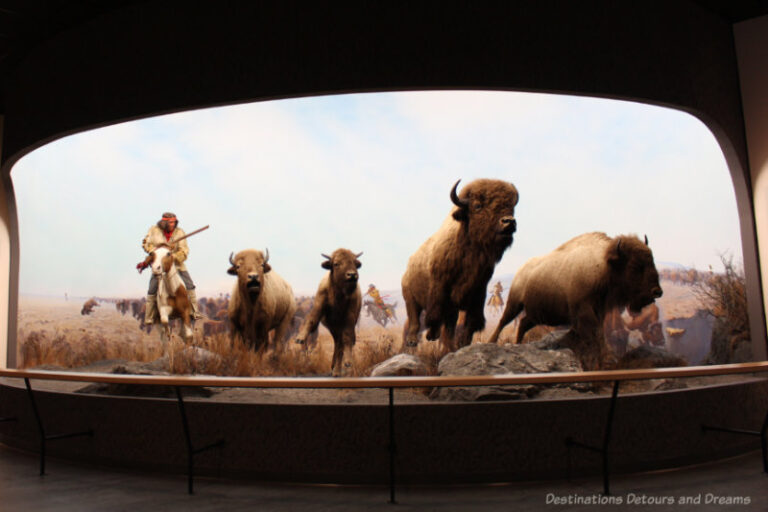
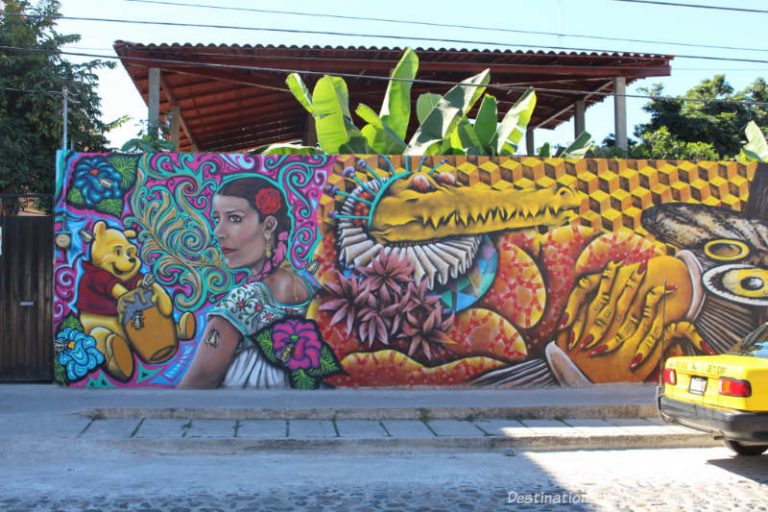
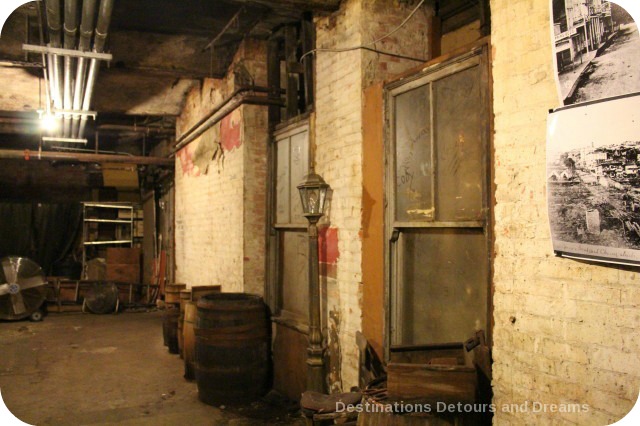
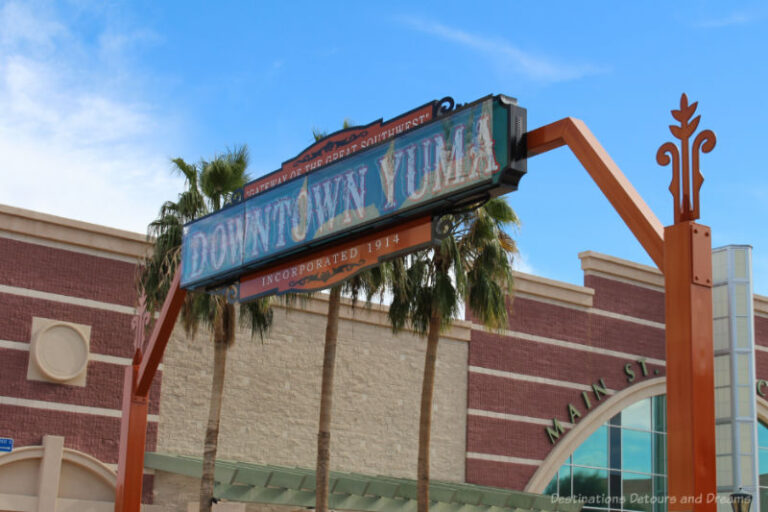
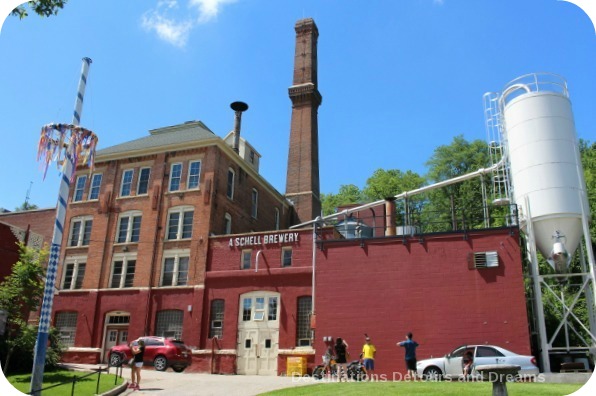
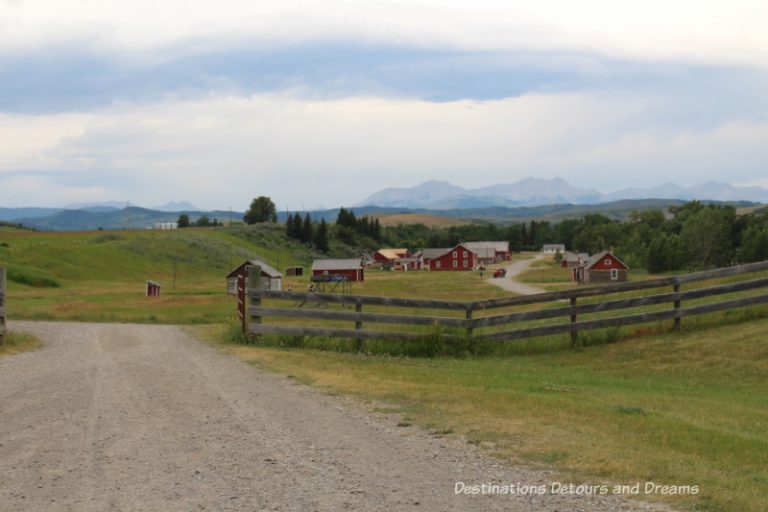
Ha! I remember, though vaguely, my parents taking us to New Ulm when we lived in Minneapolis! This wa great walk down memory lane for me:)
Jacquie, I hope you enjoyed the walk down memory lane.
I never been to Minnesota. It looks like an interesting place to visit. The clock tower looks really neat. Thanks for sharing the history.
Sabrina, it was cool to be at the clock tower when the glockenspiel was playing.
Interesting. I bet there are “Swedish” towns in Minnesota as well becasue a lot of Swedish immigrants who arrived in the 1800s settled there. Pictures of the food, brewery, monumment and man in traditional clothing looks a bit like Germany. But the buildnings do not. They are distinctly British in style.
Catarina, there is certainly Swedish influence in Minnesota. Lindström is known as “America’s Little Sweden”. I haven’t been there, but it’s not far from Minneapolis and sounds like something to add to my itinerary for a future visit. North of the U.S. border, my home city of Winnipeg also has a history of Swedish immigrants and there is currently an active cultural organization.
Looks great. I’m ready for some schnitzel for lunch and then a trip to the brewery for some strong lager.
Ken, my next post (tomorrow) will be about the brewery.
Interesting looking town. It has really held onto the “German” theme. It must be a hit with tourists.
I must say the sausages and mash meal does not look highly enticing. Now the orange soda…….
Phoenicia, the meal was actually quite good (although a little on the heavy side). I loved the soda.
Wow, what a great little community. I never heard of this place, it is somewhere I want to visit. I wonder what they do for Oktoberfest? A town like this, it could be a major event for the community.
William, the town has Oktoberfest celebrations the first two Saturdays in October. Information is on the town’s tourism site. Looks like fun.
Having traveled a lot in Germany, I liked reading about this town in my own country! It looks like a charming place to visit and I’d sure like to hear George’s stories!
Rose Mary, George’s stories were certainly a lot of fun.
New Ulm looks like a place well worth visiting. It is interesting how long the influence of the original settlers continues in many places, whether in small towns or neighborhoods in large cities. In my travels, particularly throughout the USA, I have come across many towns built by various European immigrants where the buildings, shops, monuments and restaurants still reflect the heritage of their original settlers. They are fun to visit, as you fell like you have been transported to a different place. A very German town that I once visited is Frankenmuth, in Saginaw County, Michigan.
Eva, it is interesting to see the original influence. I’ve not heard of Frankenmuth, but will keep it in mind should I be going through Michigan one day. Did you ever come across any Hungarian towns?
I am not aware of any, but I know Cleveland, Ohio has or had a very large Hungarian population. I looked it up and found a quote saying “Cleveland once was known as the second greatest Hungarian city outside Budapest.” I’ve never been there, so I don’t know anything further.
The next closest thing to a Hungarian town that I know of is the City of West in Texas. They claim to be the “Czech Heritage Capital of Texas”. We have yet to stop in to see it on our way to southern Texas.
Where we have stopped in for a visit is Fredericksburg, Texas, another very German town. It is named after Prince Frederick of Prussia.
Eva, it’s interesting to find these little pockets of the Old World in the New World, isn’t it?
I’ve never heard of New Ulm, but I find it fascinating that the population has stayed so German in heritage over a 200 year period. It looks like a very cute little town. I’ve never explored much of Minnesota. I had a job as an actor where we rehearsed for a couple weeks in Minneapolis, but from there we went on tour. And Minneapolis seems to be a far cry from New Ulm.
I love how George’s Grandma served him beer as a little kid. This isn’t part of the US culture, but I believe it is so common in Europe. Having said that, I’ve always hated beer so I’m not sure it would have worked for me.
This is fascinating. A Bavarian themed town that comes to mind in my area would be Leavenworth, WA. I’ve not been there, but have always wanted to go.
Jeri, I haven’t been to Leavenworth either. It would be a fun place to visit.
There is a spot like this not far from where my family used to have a cottage, that claimed to be the site of the first Polish settlement in Canada – Wilno, Ontario, Canada. The original settlers came over in the 1860s, and many of their descendants still call the area home. There’s a tavern with traditional Polski food, and folks still speak a charming Polski dialect. I think it’s very important to preserve cultural heritage, it brings colour and perspective to our often-too-staid North American lives!
Wilno sounds like an interesting place.
When we were there several years ago we came upon some sort of German club just off the main street. It was very old building and had a pub/restaurant in basement and a gymnasium on another floor. I think it might have been called Turner Hall, at least that is what seems to come up when I do a search now.
Stuart, I think you’re right – it must have been the Turner Club.